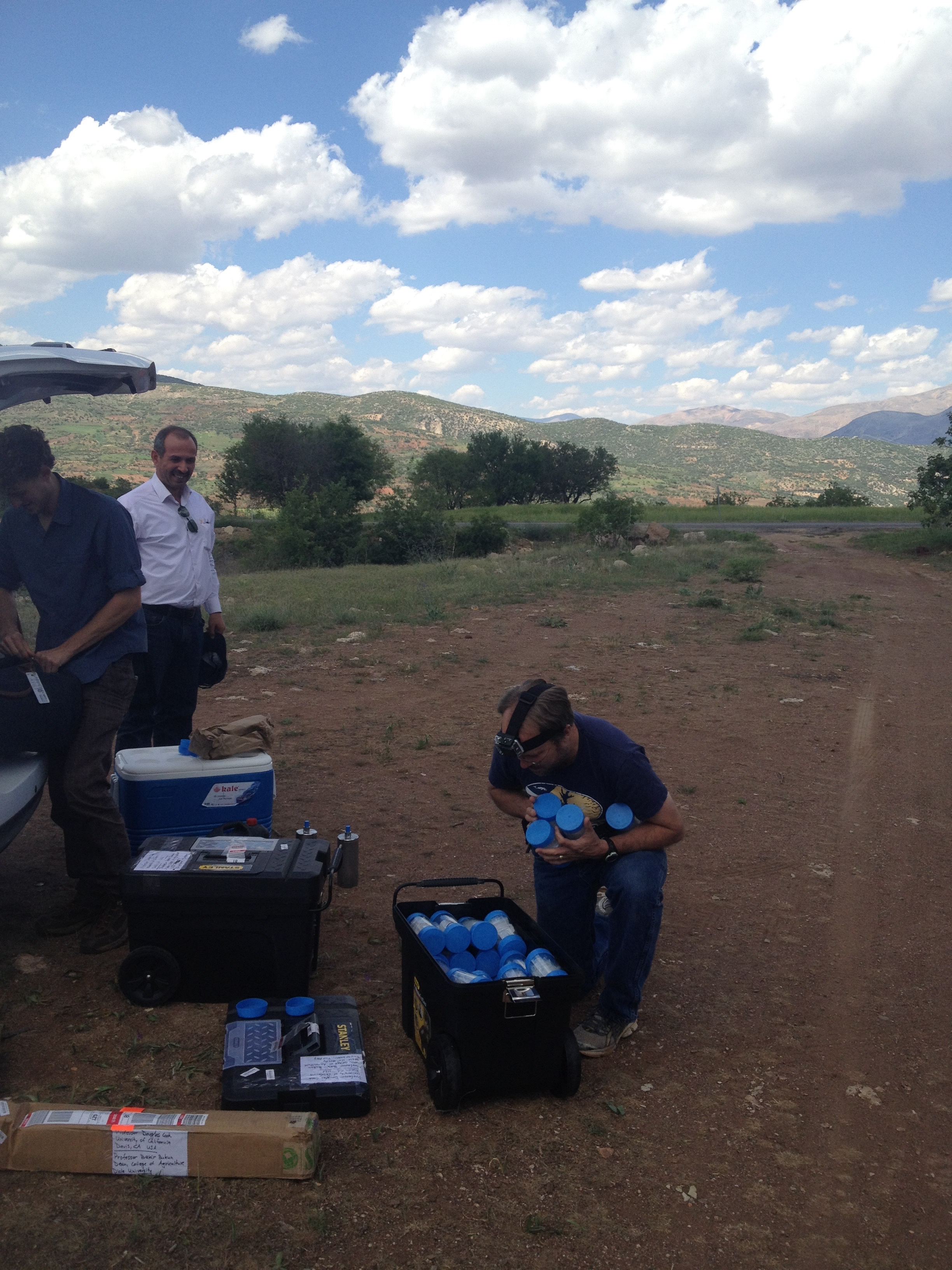Behind the Scenes: The Hunt for Wild Chickpeas.
Published in Ecology & Evolution

The paper in Nature Communications is here: http://go.nature.com/2ohNLls
Crop wild relatives are the largest reservoir of genetic diversity for the challenges faced in agriculture, from pests and diseases to abiotic stresses like drought and excess heat. However, wild relatives only constitute approximately two percent of accessions across crops in international gene banks (Ford-Lloyd et al 2001, Dempewolfe et al 2014). Furthermore, most existing collections were created in an ad hoc fashion, with no attempt to have collections reflect the range of possible ecological adaptations present across populations in different habitats. This shortcoming is particularly acute in chickpea, a crop where only 18 genetically distinct accessions of the immediate wild relatives have been deposited into international collections (Berger et al 2003). This lack of diversity exacerbates the challenges chickpea faces from the fungal pathogens Ascochyta blight and Fusarium wilt, the Lepidopteran pest Helicoverpa armigera, drought, excess heat and excess cold; all challenges expected to grow worse with climate change.
To address these challenges we built a new collection of Cicer reticulatum, the immediate wild relative of chickpea, and a sister species Cicer echinospermum, with the intention of capturing the greatest range of ecological variation possible (von Wettberg et al., 2018). We sampled seeds 371 plants and collected DNA from 839 other plants across 21 sites reflecting a range of soil types, and placed the material in national and international genebanks. This work, supported by the USAID Feed the Future Chickpea Climate Resilience Innovation laboratory, NSF Plant Genome, the Australian Grains Research and Development Corporation and the Saskatchewan Pulse Growers, was only possible with the facilitation and complete participation of many Turkish colleagues.

Although collections alone are useful, they are of the greatest downstream use to the breeding community if carefully characterized. We have taken a multi-pronged and multi-disciplinary approach to characterizing the collection, employing population genomic approaches to assess genetic variation in the plant material, and careful characterize of sites in terms of soil chemistry. Among other patterns, we find a striking match of the color of seeds from different sites with their source soil, a likely adaptation to reduce seed predation. Ongoing work is characterizing microbial diversity from these sites.

The greatest limitation to using wild material in breeding programs is that the material is wild, and that early generation backcrosses suffer some yield drag from wild traits. To overcome this challenge, we have introgressed 20 wild parents into five elite cultivars from the leading world chickpea production zones, in India, Canada, Australia, Turkey, and Ethiopia to build reverse introgression lines. These introgression lines have not only allowed us to uncover the genes underlying the essential domestication traits that must be removed in backcrosses, as well as adaptive traits in the wild material, but build a pre-breeding resource that can be widely deployed as breeding challenges shift with climate change.

Since we began collecting in 2013, three of the sites where we collected have been destroyed by landuse changes, such as road expansion and conversion of pastures to tilled agricultural land. With few protections in situ, most crop wild relatives are declining in the major domestication regions such as the Fertile Crescent, China, Meso-America, the Central Andes, and the Eastern African Highlands due to rapid development, civil unrest and war, or lack of enforcement of protected areas.
Eric JB von Wettberg, Peter L. Chang, Vincent Vadez, Abdulkadir Aydogan, Bekir Bukun, Bunyamin Tar'an, Asnake Fikre Woldemedhin, Abdullah Kahraman, Jens Berger, Sergey V. Nuzhdin, Douglas R Cook.

Citations:
Ford-Lloyd, B.V., et al. Crop wild relatives-undervalued, underutilized and under threat? BioScience 61, 559-565 (2001).
Dempewolf, H., et al. Adapting agriculture to climate change: a global initiative to collect, conserve, and use crop wild relatives. Agroecology and Sustainable Food Systems 38, 369-377 (2014).
Berger, J., Abbo, S. and Turner, N.C., Ecogeography of annual wild cicer species. Crop Science, 43(3), pp.1076-1090 (2003)
von Wettberg EJB, Chang PL, Greenspan A, Carrasquila-Garcia N, Basdemir F, Moenga S, Bedada G, Dacosta-Calheiros E, Moriuchi KS, Balcha L, Mamo B, Singh V,Cordeiro MA, Vance L, Bergmann E, Warschefsky EJ, Marques E, Dinegde KN, Sani SG, Getahun T, Yilmaz MA, Cacmak A, Rose J, Migneault A, Krieg CP, Saylak S, Temel H, Noujdina NV, Friesen ML, Siler E, Linday D, Akhmetov Z, Ozelik H, Kholova J, Can C, Caur P, Yildirim M, Sharma H, Vadez V, Tesfaye K, Woldemedhin AF, Tar'an B, Ayodogan A, Bekun B, Penmetsa RV, Berger J, Kahraman A, Nuzhdin SV, Cook DR. 2018. Ecology and community genomics of an important crop wild relative as a prelude to agricultural innovation. Nature Communications, 9, doi:10.1038/s41467-018-02867-z





Please sign in or register for FREE
If you are a registered user on Research Communities by Springer Nature, please sign in